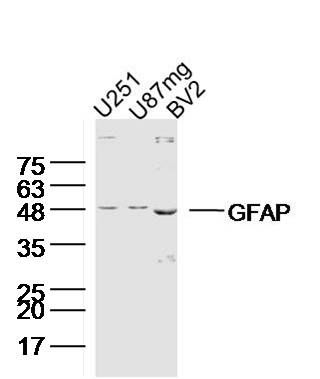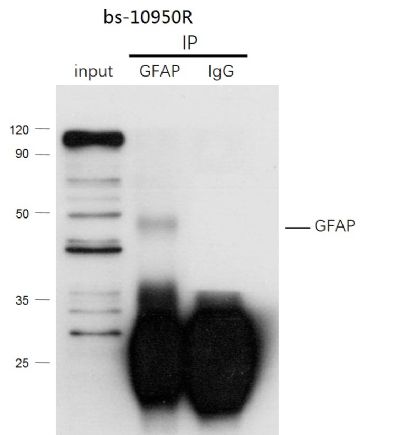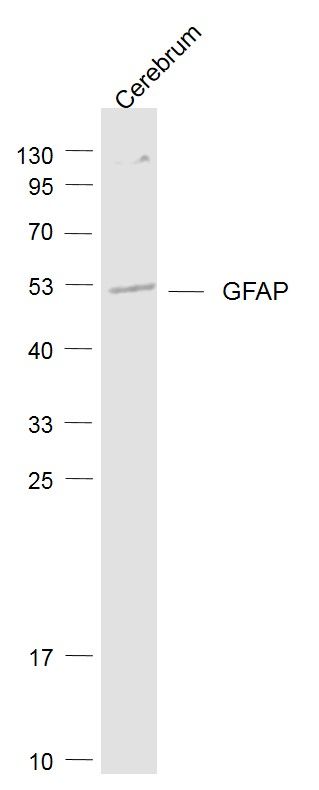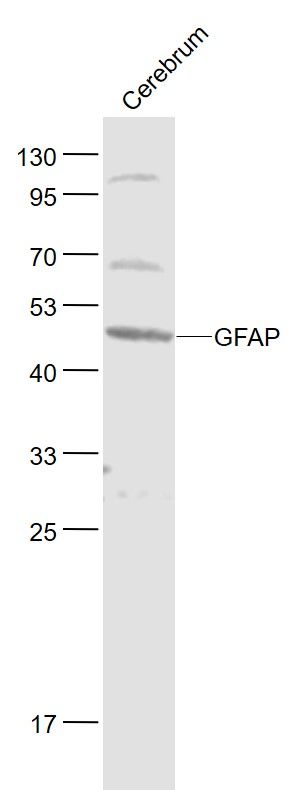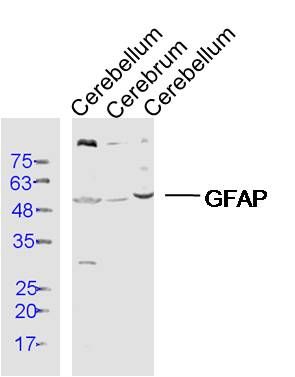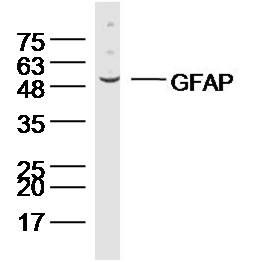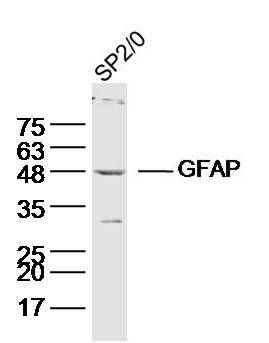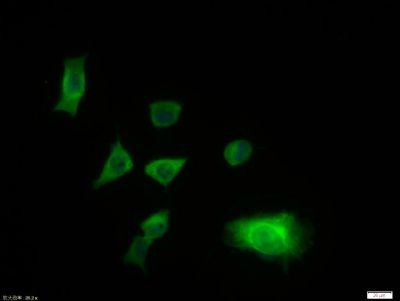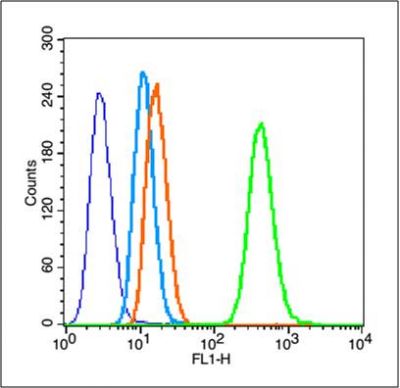Sample:
U251(human) Cell Lysate at 40 ug
U87MG(human) Cell Lysate at 40 ug
BV2(mouse) Cell Lysate at 40 ug
Primary: Anti-GFAP (SL10950R) at 1/300 dilution
Secondary: IRDye800CW Goat Anti-Rabbit IgG at 1/20000 dilution
Predicted band size: 48 kD
Observed band size: 48 kD
GFAP was immunoprecipitated from human hela cells lysate with SL10950R at 1/150 dilution. Western blot was performed from the immunoprecipitate using protein A/G beads. HRP Conjugated Mouse anti-Rabbit IgG (Light Chain specific) was used as secondary antibody at 1:5000 dilution.
Lane 1: human hela cells lysate 10 µg (Input).
Lane 2: SL10950R IP in human hela cells lysate.
Lane 3: native rabbit IgG IP in human hela cells lysate (negative control).
Secondary
All lanes : Mouse anti-Rabbit IgG (Light Chain specific), HRP Conjugated, 1:5000
Sample:
Cerebrum (Mouse) Lysate at 40 ug
Primary: Anti-GFAP (SL10950R) at 1/1000 dilution
Secondary: IRDye800CW Goat Anti-Rabbit IgG at 1/20000 dilution
Predicted band size: 48 kD
Observed band size: 48 kD
Sample:
Cerebrum (Rat) Lysate at 40 ug
Primary: Anti- GFAP (SL10950R) at 1/1000 dilution
Secondary: IRDye800CW Goat Anti-Rabbit IgG at 1/20000 dilution
Predicted band size: 48 kD
Observed band size: 48 kD
Sample:
Cerebellum (Rat) Lysate at 40 ug
Cerebrum (Mouse) Lysate at 40 ug
Cerebellum (Mouse) Lysate at 40 ug
Primary: Anti- GFAP (SL10950R) at 1/300 dilution
Secondary: IRDye800CW Goat Anti-Rabbit IgG at 1/20000 dilution
Predicted band size: 48 kD
Observed band size: 50 kD
Sample:Cerebellum (Mouse) Lysate at 40 ug
Primary: Anti-GFAP (SL10950R) at 1/300 dilution
Secondary: IRDye800CW Goat Anti-Rabbit IgG at 1/20000 dilution
Predicted band size: 48 kD
Observed band size: 48 kD
Sample:SP2/0(human) Cell Lysate at 40 ug
Primary: Anti-GFAP (SL10950R) at 1/300 dilution
Secondary: IRDye800CW Goat Anti-Rabbit IgG at 1/20000 dilution
Predicted band size: 48 kD
Observed band size: 48 kD
Tissue/cell:SH-SY5Y cell; 4% Paraformaldehyde-fixed; Triton X-100 at room temperature for 20 min; Blocking buffer (normal goat serum, SLC0005) at 37°C for 20 min; Antibody incubation with (GFAP) polyclonal Antibody, Unconjugated (SL10950R) 1:100, 90 minutes at 37°C; followed by a FITC conjugated Goat Anti-Rabbit IgG antibody at 37°C for 90 minutes, DAPI (blue, C02-04002) was used to stain the cell nuclei.
Blank control (blue line): Hela (fixed with 80% methanol (5 min at -20℃) and then permeabilized with 0.1% PBS-Tween for 20 min at room temperature ).
Primary Antibody (green line): Rabbit Anti-GFAP antibody (SL10950R),dilution: 3μg /10^6 cells;
Isotype Control Antibody (orange line): Rabbit IgG .
Secondary Antibody (white blue line): Goat anti-rabbit IgG-PE,Dilution: 1μg /test.
|
